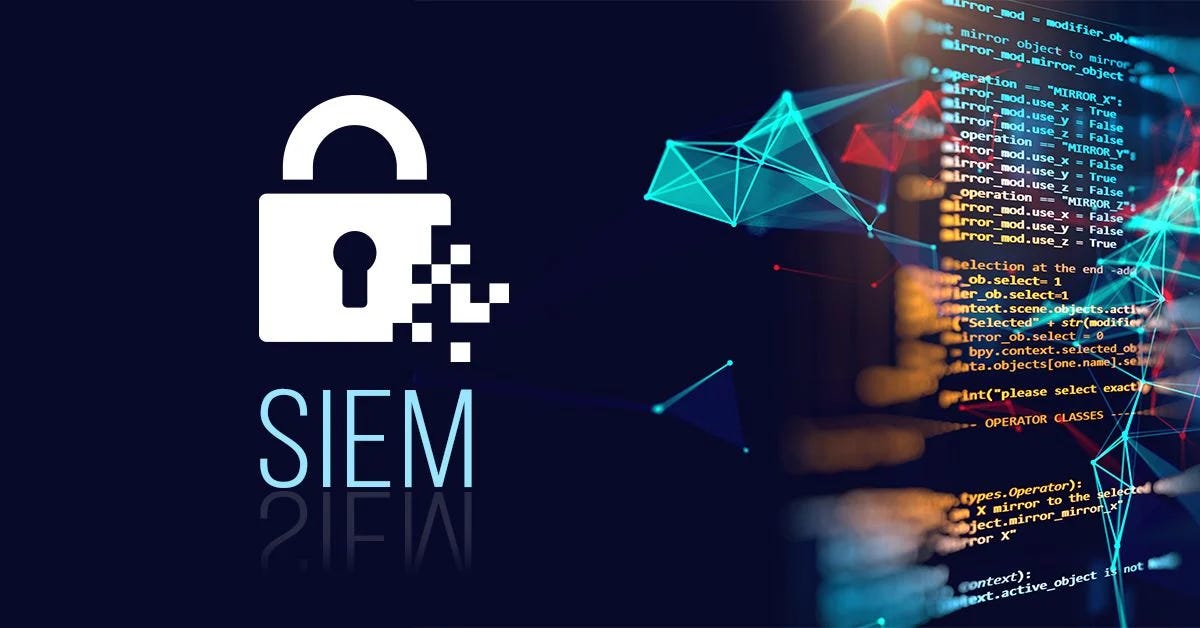Tech
Strengthening Cyber Defenses with SIEM Solutions

In a digital era where security breaches and cyber threats frequently dominate headlines, organizations increasingly turn to sophisticated technologies to bolster their cybersecurity defenses. Among these technologies, Security Information and Event Management (SIEM) has emerged as a critical component in the architecture of corporate security systems. SIEM is an essential element of any robust security strategy, offering much more than log management capabilities, acting as a cornerstone for analyzing, detecting, and managing security incidents.
At its core, SIEM technology provides a comprehensive view of an organization’s information security, gathering data from numerous devices and presenting it in a unified, coherent context. This holistic approach is crucial for identifying subtle anomalies or patterns that could indicate a security threat. This exploration into the mechanisms and advantages of SIEM will reveal the depth and breadth of its capabilities to enhance any organization’s cybersecurity posture.
The Role of SIEM in Modern Cybersecurity
Today’s security landscape mandates that organizations adopt proactive and intelligent frameworks to keep pace with the rapidly evolving threats. SIEM sits at the epicenter of this requirement. SIEM provides security teams unparalleled oversight by amalgamating extensive log data from network devices, servers, and endpoints. SIEM systems can monitor for unusual activity, flag potential threats, and generate alerts allowing rapid response to incidents that could escalate into significant breaches if left unchecked. The result is a formidable defense mechanism that is alert and responsive to the ever-changing threat environment.
SIEM’s role extends beyond mere detection; it also aids in compliance management by providing comprehensive reporting and audit trails necessary for regulatory adherence. Moreover, SIEM platforms leverage advanced analytics and machine learning algorithms to identify patterns indicative of known and emerging threats, enhancing threat detection capabilities. This proactive approach empowers organizations to thwart cyberattacks before they inflict damage, bolstering overall cybersecurity posture. As cyber threats evolve in sophistication and frequency, the importance of SIEM in modern cybersecurity strategies cannot be overstated. Its ability to centralize security data, analyze it in real time, and facilitate timely response actions makes it a critical component of any robust cybersecurity framework.
Decoding SIEM: How It Works and Its Components
SIEM operates at its most fundamental level by collecting and analyzing security-related data from various sources – a set of capabilities essential for detecting and responding to cyber incidents. Event logs, network traffic, and other data streams are ingested in real time, filtered for relevancy, and correlated to identify patterns that might suggest a security event. Advanced algorithms refine these data points, securing the system’s integrity against false positives and mitigating the risk of overlooking genuine threats. Effective SIEM deployment enables organizations to navigate the complex waters of cybersecurity vigilance with greater efficacy and precision.
The Benefits of Implementing SIEM Solutions
Implementing SIEM within an organization brings forth a spectrum of strategic advantages. Primarily, it enhances the agility and responsiveness of the security apparatus. Upon detection of an incident, SIEM systems facilitate immediate mobilization, considerably shortening the window from detection to resolution. This acceleration is critical in minimizing the potential impact of threats. SIEM also streamlines the process of compliance with regulatory frameworks by generating comprehensive reports, easing the burden associated with compliance. The heightened security intelligence also provides valuable insights into the ‘what’ of security events and the ‘why’ behind them, enabling security personnel to anticipate better and prepare for potential incidents.
SIEM Deployment: Best Practices for Organizations
Deployment of SIEM solutions should be approached with meticulous planning and attention to detail. Best practices suggest a phased strategy beginning with identifying valuable data sources and aligning SIEM functionality with organizational goals. Personnel training is just as critical as the technology, requiring a specialized skill set to interpret and act on SIEM data. Additionally, organizations must commit to ongoing system maintenance, tweaks, and reviews to ensure that the SIEM continues to serve its intended function effectively. A successful SIEM deployment is not a one-time event but a persistent commitment to adapting and maximizing the tool’s potential for an evolving security landscape.
Future Trends in SIEM Technology
Innovation within SIEM technology suggests a future where predictive security strategies become mainstream. Integrating machine learning and artificial intelligence is expected to take the lead in advancing SIEM capabilities. Predictive analytics and threat detection and response automation will allow organizations to anticipate potential breaches and respond to them with greatly enhanced swiftness. Furthermore, the ongoing development of user and entity behavior analytics (UEBA) further refined SIEM tools, allowing them to more accurately assess and respond to anomalies that deviate from established patterns within an organization’s network.
Comparing SIEM Solutions: Features to Look For
Choosing from the myriad available SIEM solutions requires carefully considering several vital features. Log management capabilities, scalability, and real-time analytics are top priorities that dictate a SIEM’s effectiveness. Moreover, integration with existing security infrastructure and user-friendliness determine how easily a business can adopt the system into its operations. A SIEM solution must also have a robust incident response component to help mitigate the identified threats efficiently. Given the complexities of the digital landscape, organizations should seek SIEM solutions that balance sophisticated functionalities and intuitive operation.
SIEM and Compliance: Meeting Regulatory Requirements
SIEM solutions play a critical role in ensuring organizations meet regulatory compliance standards: limited resources and the increasing complexity of compliance mandates present challenges that SIEM needs to be better equipped to address. By consolidating and analyzing log data, SIEM provides a transparent audit trail suitable for regulatory reporting, thus easing the strain of compliance efforts. The capability to swiftly generate reports tailored to specific regulations, such as GDPR, HIPAA, or PCI DSS, is a crucial feature of SIEM that greatly benefits compliance officers and IT security professionals.
Tech
UVLACK: Redefining Innovation in the Digital Age

In today’s fast‑paced technological landscape, UVLACK emerging platforms and products often shape the way we connect, create, and consume content. One such rising name making waves across industries is UVLACK. Though still relatively new to the mainstream, UVLACK is steadily gaining recognition for its unique approach to digital solutions, user experience, and future‑ready innovation.
What Is UVLACK?
UVLACK is a forward‑thinking brand and platform dedicated to bridging gaps in digital communication and creative technology. At its core, UVLACK functions as a multi‑purpose ecosystem—offering tools and services that cater to professionals, creators, and businesses seeking smarter ways to operate in the modern digital world.
While its origins remain rooted in tech innovation, UVLACK’s vision has expanded. Today, it is known not only for its software capabilities but also for fostering an environment where collaboration and bold ideas thrive.
Key Features and Offerings
1. A Versatile Creative Suite
UVLACK’s flagship offering is its creative suite—a set of intuitive tools designed for graphic designers, content creators, and digital marketers. From advanced design templates to AI‑powered editing features, UVLACK ensures that even beginners can produce professional‑grade visuals in less time.
2. Collaboration at Its Core
The platform incorporates real‑time collaboration features, allowing teams scattered across the globe to brainstorm, design, and deploy projects seamlessly. Integrated chat, file sharing, and version control make UVLACK a central hub for remote teams.
3. Smart Analytics and Insights
Businesses benefit from UVLACK’s built‑in analytics dashboards. These provide real‑time insights into campaign performance, user engagement, and creative output—helping brands make data‑driven decisions with ease.
4. Cross‑Platform Accessibility
Whether you’re working on a desktop, tablet, or smartphone, UVLACK adapts to your workflow. Its cross‑platform compatibility ensures that you can create, edit, and share wherever you are.
Why Is UVLACK Gaining Attention?
UVLACK stands out because it blends ease of use with cutting‑edge technology. Unlike many complex software ecosystems, UVLACK prioritizes a clean interface and a user‑first approach.
- For creators, it means faster output without compromising quality.
- For businesses, it means a reliable platform that grows with their needs.
- For tech enthusiasts, it represents a bold step into the future of digital tools.
The Future of UVLACK
The roadmap for UVLACK suggests a steady expansion into AI‑driven automation, augmented reality integrations, and deeper customization for enterprise solutions. As more users adopt the platform, expect to see UVLACK partnering with brands, integrating with other popular tools, and becoming a go‑to solution in creative and digital workflows.
In conclusion, UVLACK is more than just a tool—it’s a movement toward smarter, faster, and more collaborative digital creation. For anyone looking to stay ahead in the rapidly evolving tech space, UVLACK is a name worth exploring.
Tech
Kalidcan: Unlocking the Potential of Next-Generation Digital Innovation

In today’s fast-paced digital world,Kalidcan innovation is key to staying ahead. Among the many emerging platforms and technologies shaping the future, Kalidcan is making waves as a cutting-edge digital concept that’s redefining user interaction, data integration, and smart system design. Whether it’s powering intelligent applications or streamlining enterprise solutions, Kalidcan is positioning itself as a name to watch in the realm of digital transformation.
What Is Kalidcan?
Kalidcan is a multifaceted digital platform or concept that blends modern technological tools—such as artificial intelligence (AI), data analytics, cloud infrastructure, and automation—into a unified ecosystem. While still under the radar in some circles, Kalidcan is gaining traction for its adaptability, innovation, and forward-thinking design principles.
Though the exact nature of Kalidcan varies depending on the context in which it’s applied (it may refer to a software product, a digital framework, or even a development model), it typically embodies:
- Smart automation
- Real-time data management
- User-centric design
- Scalable architecture
- Interoperability with other digital tools
Key Features of Kalidcan
- AI-Powered Intelligence
- Kalidcan harnesses artificial intelligence to provide smart recommendations, predict user behavior, and optimize system performance across various platforms.
- Cloud Integration
- Designed for scalability, Kalidcan seamlessly integrates with cloud-based systems, allowing users to manage data and services remotely and efficiently.
- Modular System Architecture
- Its modular approach means users can tailor Kalidcan to their specific needs, adding or removing functionalities as required.
- Security and Compliance
- Security is a core component of Kalidcan, offering built-in encryption, user authentication, and regulatory compliance features.
- Real-Time Insights
- With powerful analytics and dashboards, Kalidcan delivers real-time visibility into operations, customer behavior, or any domain it’s applied to.
Use Cases of Kalidcan
1. Business Automation
- Streamlining workflows and reducing operational costs with intelligent process automation.
2. Smart Applications
- Building AI-enhanced apps for finance, health, logistics, and education using Kalidcan’s robust API infrastructure.
3. Data Integration
- Unifying disparate data sources into a cohesive, actionable format for analytics and reporting.
4. Digital Marketing
- Enhancing customer targeting, lead generation, and campaign optimization with machine learning capabilities.
Why Kalidcan Stands Out
- Flexibility: Its adaptive framework supports both small startups and large enterprises.
- Innovation: Constant updates and community-driven development keep Kalidcan at the forefront of digital trends.
- User Experience: Emphasis on intuitive design ensures ease of use for both developers and end-users.
The Future of Kalidcan
As more organizations and developers seek unified, intelligent solutions, Kalidcan’s potential is bound to grow. With possible integrations into emerging technologies like blockchain, augmented reality (AR), and the Internet of Things (IoT), Kalidcan could soon become a foundational tool in building the digital future.
Conclusion
Kalidcan is not just another name in the tech world—it’s a symbol of what’s possible when innovation meets practicality. Whether you’re a business leader looking to modernize your operations or a developer searching for a flexible framework, Kalidcan offers the tools and vision to help you thrive in a digital-first world.
Tech
IP2 Network: Revolutionizing Online Streaming and Real-Time Interaction

In a digital world where content is king and live interaction reigns supreme, IP2 Network has emerged as a unique hub for real-time live streaming. Often associated with a controversial, raw, and unfiltered style of broadcasting, the IP2 Network has built a strong following by offering viewers an alternative to heavily moderated or censored content. It has carved its own niche in the online entertainment ecosystem, attracting both fans and critics.
What Is IP2 Network?
IP2 Network is a decentralized streaming and aggregation platform primarily known for hosting and indexing live IRL (In Real Life) streamers. Unlike mainstream platforms that have strict rules and guidelines, IP2 Network prides itself on freedom of expression and independent content curation. The site doesn’t host streams directly but aggregates them from platforms like YouTube, Kick, and Rumble—allowing viewers to monitor a variety of streamers in real-time.
How It Works
IP2 Network functions as a livestream aggregator and community bulletin board, automatically updating and categorizing ongoing streams. Key features include:
- Live Stream Listings: Constantly updated list of streamers who are live.
- Community Voting System: Users can upvote or downvote streams based on entertainment value.
- Chat & Forums: Some versions of the site include public chat or discussion sections for community interaction.
- Drama and Highlights: Clips and summaries of notable events are often posted for discussion.
Popular Streamers on IP2
While IP2 Network is dynamic and its featured streamers often change, it became known for supporting certain figures during the golden era of IRL streaming on platforms like Twitch and YouTube. These streamers gained traction for their unconventional, often chaotic approach to live content. Notable examples include:
- Ice Poseidon – Often referred to as the “godfather of IRL streaming,” his influence helped shape the early days of IP2.
- Captain Content
- Chicken Andy
- Attila & Jewel
These streamers are known for traveling, interacting with strangers, and sometimes getting into controversial situations, which are part of what has drawn an audience to IP2.
Why IP2 Network Is Popular
Several factors contribute to the popularity of IP2 Network:
1. Unfiltered Content
Unlike heavily moderated platforms, IP2 offers viewers raw and unedited real-life experiences.
2. Drama and Realism
The unpredictable nature of IRL streaming means that anything can happen. From dramatic confrontations to heartfelt moments, viewers are hooked by the spontaneity.
3. Community Culture
The IP2 community thrives on memes, inside jokes, and commentary. The chat culture and user interaction drive engagement.
4. Freedom from Platform Rules
Because IP2 does not host content directly, it provides a space where streamers who are banned or restricted elsewhere can still reach an audience.
Controversies and Criticism
IP2 Network is not without its share of controversies. Some critics argue that the content promoted on the platform can be toxic, problematic, or even dangerous. Issues include:
- Harassment and Doxxing: Some streamers or viewers have been accused of engaging in or encouraging inappropriate behavior.
- Platform Bans: Several streamers featured on IP2 have been banned from Twitch, YouTube, and other platforms due to terms of service violations.
- Legal Issues: Public disturbances or illegal activities caught on stream have led to law enforcement involvement in certain cases.
Is IP2 Network Legal?
The IP2 Network itself is not illegal, as it merely aggregates publicly available streams and does not host the content. However, the legality of the content itself depends on the actions of individual streamers and the platforms they use.
The Future of IP2 Network
As platforms like Kick and Rumble continue to grow, IP2 may evolve and adapt, hosting newer faces and maintaining its relevance in the ever-changing live streaming landscape. It remains a controversial yet undeniably influential force in the world of independent digital broadcasting.
Conclusion
The IP2 Network represents a counterculture movement in online streaming—unfiltered, chaotic, and sometimes problematic. For fans, it’s a source of nonstop entertainment; for critics, it’s a symbol of what happens when moderation is absent. Whether you admire its rawness or question its ethics, IP2 Network remains a fascinating case study in modern internet culture.
-

 Tech2 years ago
Tech2 years agoUnderstanding ПРЕВОДЕЧ: Unlocking Global Communication
-

 Tech2 years ago
Tech2 years agoGeekzilla.tech Honor Magic 5 Pro: Unveiling the Technological Marvel
-

 Blog2 years ago
Blog2 years agoGeekzilla Autos: Everything You Need To Know
-

 Blog2 years ago
Blog2 years agoGeekzilla Podcast: A Journey into Geek Culture
-

 Health2 years ago
Health2 years agoWellHealthOrganic Buffalo Milk Tag: Your Nutrient-Rich Dairy Upgrade
-

 Health2 years ago
Health2 years agoWellhealth how to build muscle Tag: Complete Guide
-

 Blog2 years ago
Blog2 years agoTips for Breaking Into the Restaurant Industry
-

 Tech2 years ago
Tech2 years agoPikruos is a Leading Provider of Innovative IT Solutions
